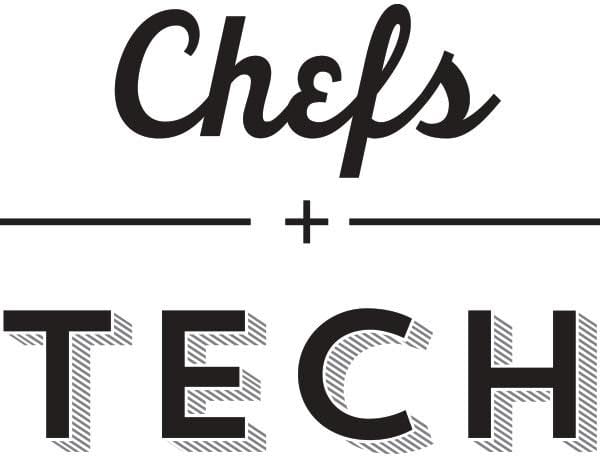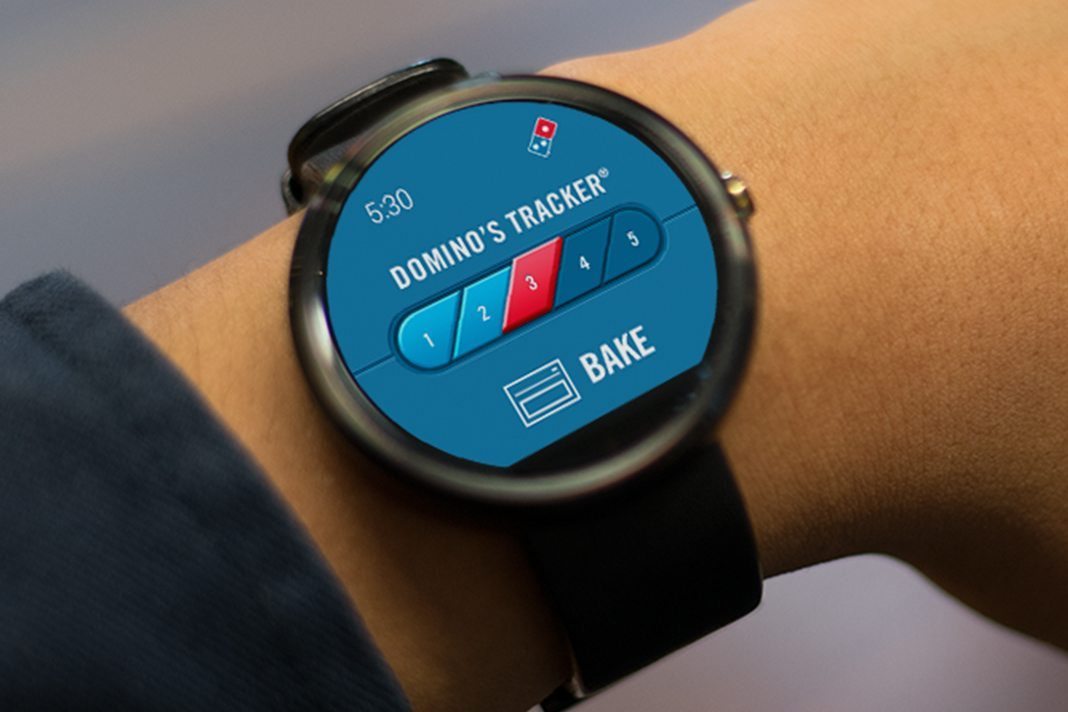Skift Take
Domino's most impressive achievement was innovating at a point where many other companies simply whither away — despite their size.

Editor’s Note: In September we announced that Skift was expanding into food and drink with the addition of the Chefs+Tech weekly newsletter.
We see this as a natural expansion of the Skift umbrella, bringing the big picture view on the future of dining out, being fanatically focused on the guest experience, and at the intersection of marketing and tech.
You can find the archives here, read the latest issue below, and subscribe here:
Subscribe to receive weekly updates
Domino’s Wave of Delivery Success
When it comes to restaurant tech, Domino’s has been on the bleeding edge since near day one. They were among the first to experiment with new ways to order, building the experimentation and unorthodox ordering methods right into its brand marketing. This is paying off big time as the pizza chain continues to introduce new and novel ideas (like its specialized Chevrolet Spark complete with warming ovens). Bloomberg Businessweek has a great feature on the chain (with a great headline!) detailing Domino’s methods and subsequent financial success.
The story of Domino’s success in innovation began with a serious problem: people didn’t like Domino’s pizza. In the late 2000s, in fact, test subjects reported liking the pizza less when they found out where it came from. The brand completely redid its recipe, and promoted it heavily with a marketing and ad campaign. Turns out, it did really, really well. (The pizza and the marketing.)
Near the end of the story comes the most interesting insight: the popularity and ease of ordering from other delivery services means that large pizza chains must compare the quality of their food to that of many other restaurants. Gone are the days when you ordered a pizza because it’s literally the only thing that could be delivered to your house. The digital era has ushered in a whole lot of customer choice, meaning even the most established brands serving up the most established delivery food of all time need to prioritize food quality and taste.
So What’s Going on in Mexico, Rene Redzepi?
Social media takes you places you’d never go otherwise. Though we’ve heard this ad nauseum from marketers and in navel-gazing thinkpieces, when this is done right, it borders on magical. (This sounds hokey but I believe it!) Case in point (and one of my favorite chefs to feature on C+T): Rene Redzepi of Copenhagen’s famed Noma restaurant. After closing its original Copenhagen location after 14 years, Redzepi traveled to Tulum, Mexico with his staff for a seven-week residency, working in the same local-ingredient fashion in a location that couldn’t be more different from home. Similarly, he brought Noma to Japan in 2015 and to Australia in 2016. Notably, this residency is a collaboration with chef Rosio Sanchez who worked in the Noma kitchen and went on to open her own series of restaurants, Hija de Sanchez, in Copenhagen.
Dinner, including beverage pairings, at Noma’s Mexico pop-up will cost $600 per person when service starts on April 12 — so it’s certainly not for everyone. For those of us interested in the food but with little hope of actually making it to the open-air restaurant in Tulum, Redzepi is a master of social media, and has been using Instagram to share photos and videos as the team spends time in Mexico developing dishes for service. Follow him on Instagram to access his Instagram Stories, featuring silly looks behind the scenes of the entire project. There’s something special about one of the most exclusive restaurants in the world offering everyone a clear view into the process of discovering local ingredients, developing dishes, and learning about a new type of cuisine otherwise unaccessible to most.
After Lucky Peach, More Chef-Driven Print
Last week, rumors of beloved print magazine Lucky Peach were just rumors, but they’ve since been confirmed (and given the NYT what-went-wrong treatment). According to the Times, the magazine’s demise comes from differences of opinion between partners — that is, the magazine’s editors and restaurateur David Chang. “They’re a restaurant company and we’re a media company and we couldn’t always find the same page,” Peter Meehan, Lucky Peach’s editorial director, told the Times.
A big part of what made Lucky Peach so special, according to many fans, is its association with Chang. And as the big publishing houses cut back on print magazines, receiving a well-crafted, interesting journal of commentary about food made a great mail day. Eater compiled a helpful list of chef-driven print publications — and noted a few on the way. (I am pretty pumped about a forthcoming project from Chicago’s Stephanie Izard, TBH.)
When this newsletter started four years ago, chefs were starting to make their marks on social media — and they still are, see above. Interesting to see that all of that storytelling has circled back to a more traditional medium in print. Unfortunately, any print veteran, this writer included, can tell you that print magazines are a tricky business. Here’s hoping the financial backing matches the enthusiasm of these projects, because like a well-crafted restaurant meal, these creative endeavors are so much better when served up with passion.
The Cultural Magic of Fast Food Twitter
Last week, someone with control of the @McDonaldsCorp Twitter account tweeted an aggressively anti-Trump sentiment that quickly set its followers (and a whole lot of other people) abuzz. McDonalds was quick to delete the offending tweet, claiming its account was compromised by an external hacker. WIRED posted a good take on the topic of fast food Twitter: “if the idea of a fast-food social media account going off the rails totally surprises you, you haven’t been spending too much time on Twitter,” the article reads.
It’s true: fast food Twitter accounts have quietly grown to become arbiters of society, pushing the weirdness envelope in coverage, commentary, and just general fun. This is, in part, according to the piece, because fast food is so predictable: you know exactly what you’re going to get and how you’re going to get it every time you visit. Brands are instantly recognizable and had, until recently, become predictable. Social media gives an otherwise unsurprising experience some whimsy. The WIRED piece contains some quality examples, including some good ones of some Wendy’s / McDonalds beef, the brilliant @Nihlist_Arbys, which C+T discovered in 2015. What it doesn’t contain, though, is one of my favorite fast food tweets of all time, from Denny’s, which you should absolutely check out. In a world full of branding and talking points and news reports that make me want to cover my eyes, thank you, fast food Twitter, for providing some creative levity.
Foursquare Debuts Analytics
After years of collecting and tracking location data, Foursquare has an impressive cache of information about just about every business in the country (and beyond). On Monday, Foursquare’s CEO announced the company will offer analytics to retail stores and chain restaurants. Foursquare Analytics will give merchants insight on foot traffic, loyalty, demographics, visit patterns, and more. To start, Foursquare secured Taco Bell and TGI Fridays as partners, and is offering more information to other interested businesses.
Digestifs
- Want to watch a robot make a burger? — Singularity Hub
- ICYMI, the full list of James Beard Award nominees, announced last week — Food & Wine
- The state of delivery on demand, from DoorDash CEO Tony Xu — TechCrunch
- A good read for those considering social media advertising: a look at ads inside Instagram Stories — Resolution Media
- HA, a desperate customer amended her digital pizza order to ask the restaurant to deliver a spare roll of toilet paper, too. — Munchies
- A presumed food-delivery robot enjoyed a photoshoot in San Francisco this weekend, but don’t hold your breath for its actual debut — TechCrunch
Subscribe Now
The Daily Newsletter
Our daily coverage of the global travel industry. Written by editors and analysts from across Skift’s brands.
Have a confidential tip for Skift? Get in touch
Tags: skift table
Photo credit: An Android Wear watch app from Domino's that allows customers to track the progress of their delivery. Domino's
